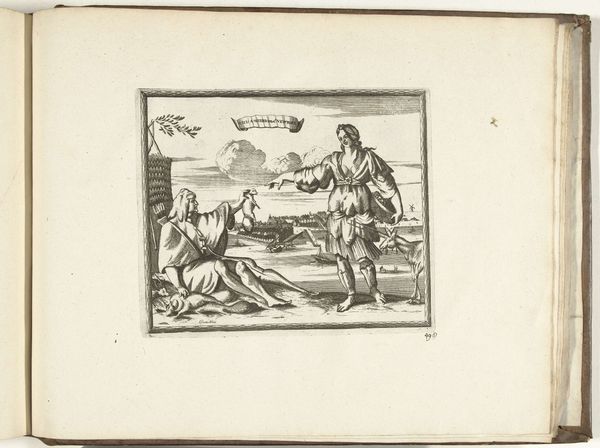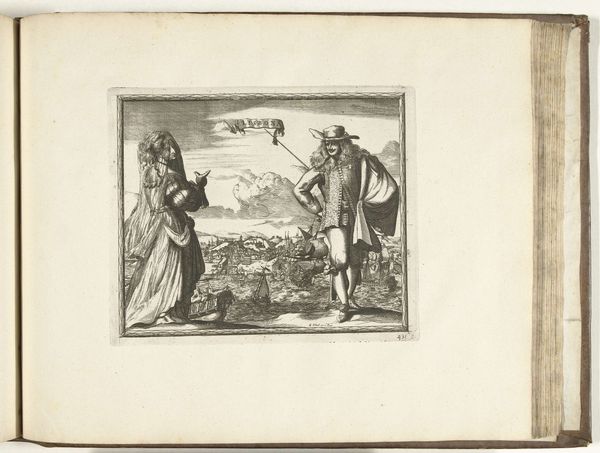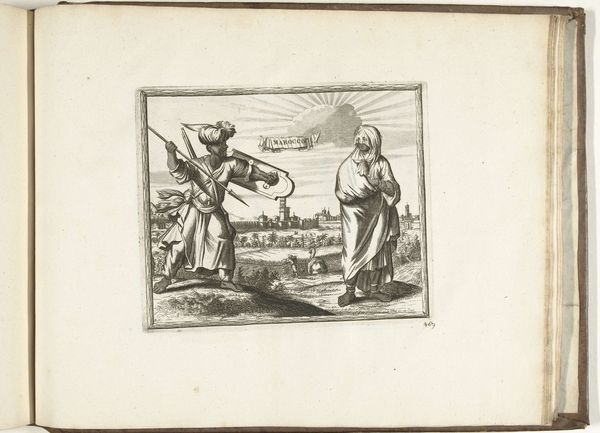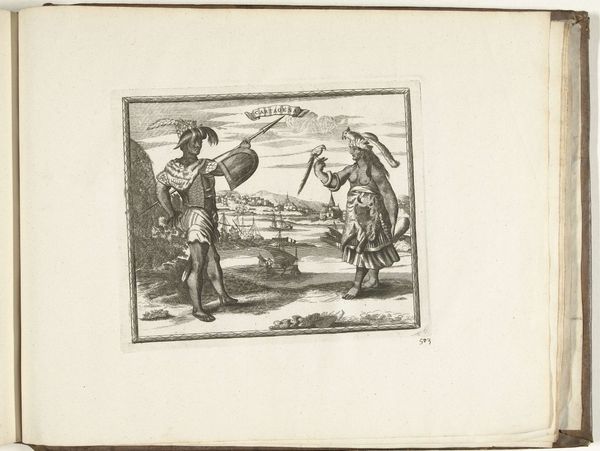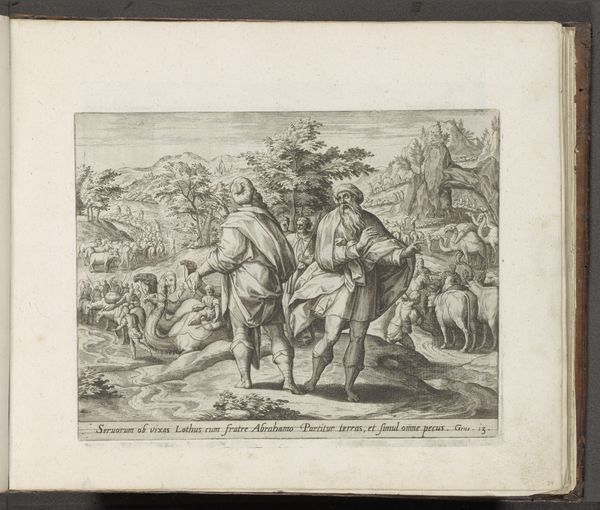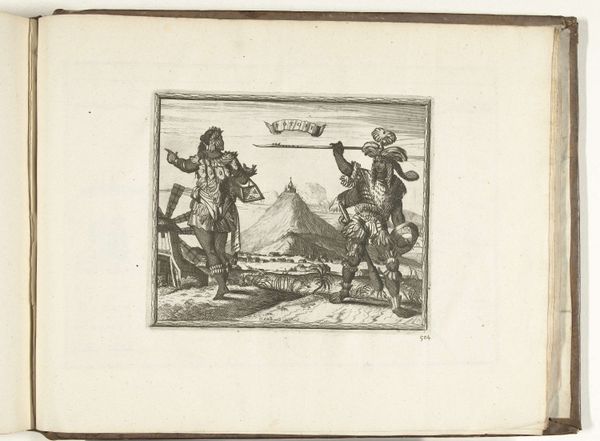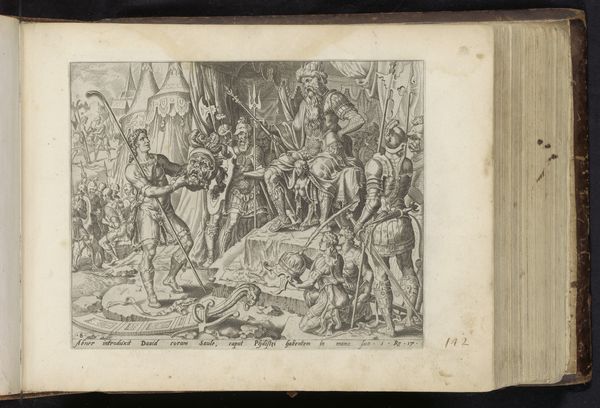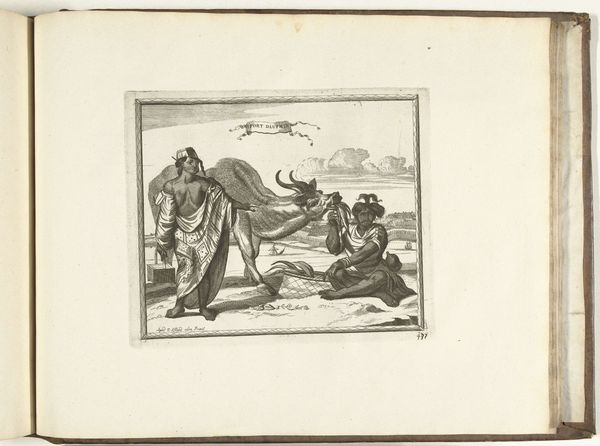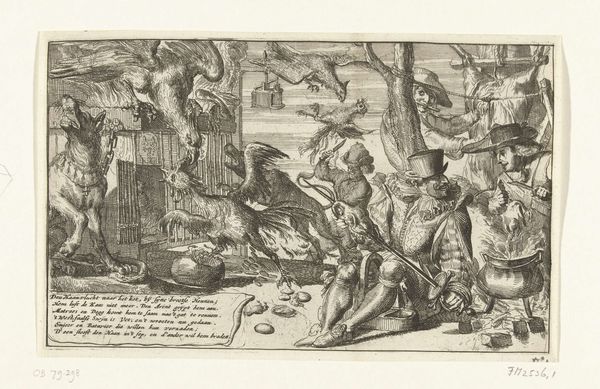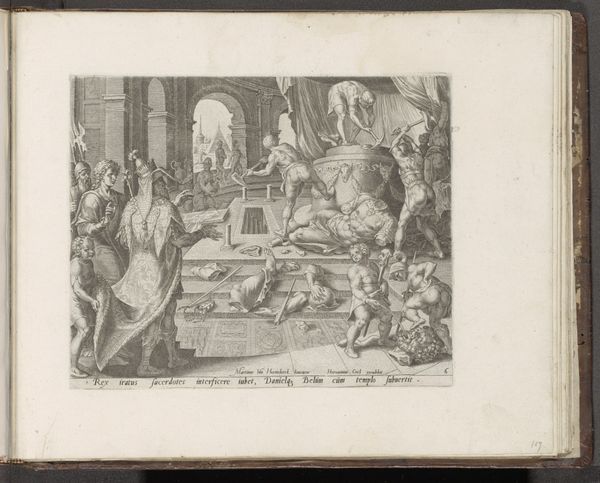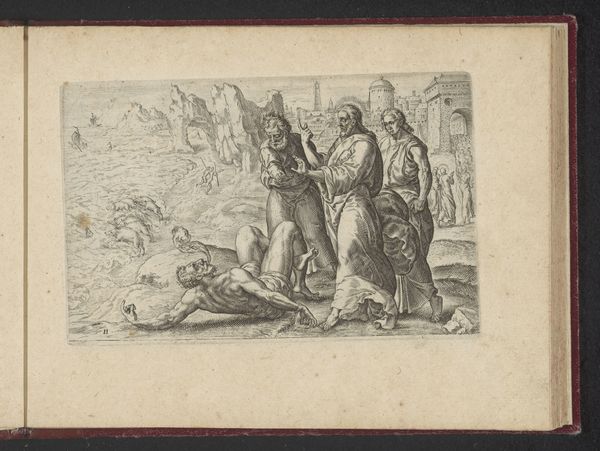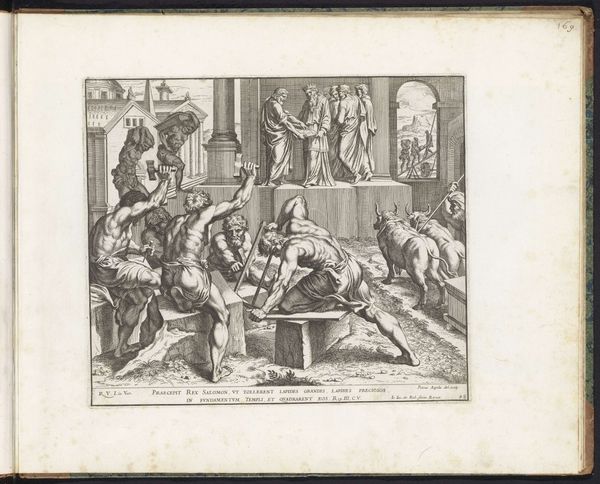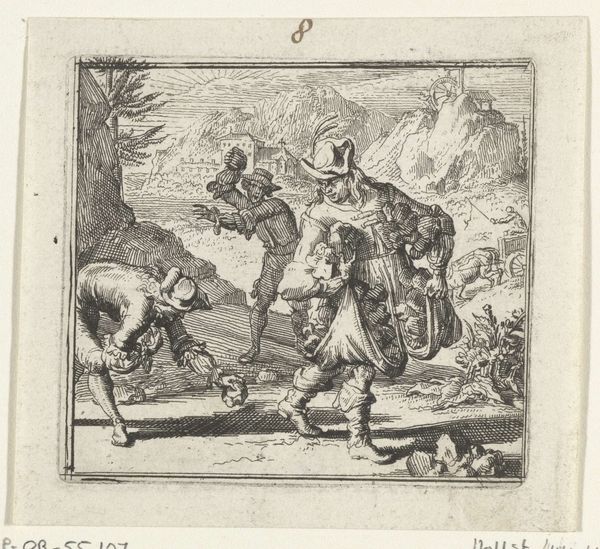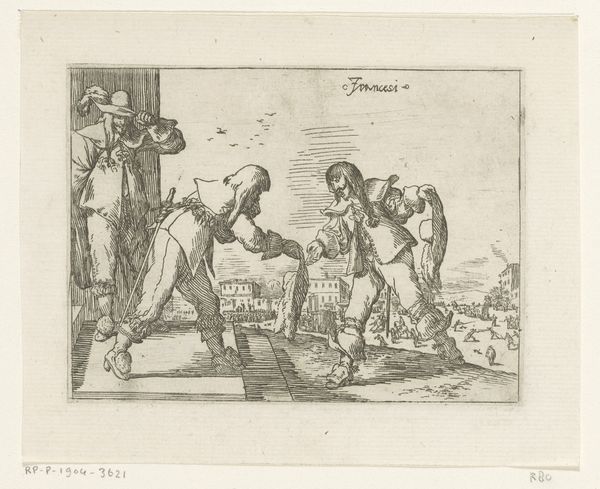
print, engraving
#
narrative-art
# print
#
figuration
#
line
#
engraving
Dimensions: height 181 mm, width 215 mm
Copyright: Rijks Museum: Open Domain
Editor: This engraving from 1726, titled "Inwoners van Puerto Rico" and created by Carel Allard, seems to portray an interaction between Indigenous people and, I presume, colonizers, given the fort in the background. The figures are depicted with precise linework. What catches your eye about this print? Curator: Immediately, I consider the materials used – the paper, the ink, the copperplate. These are not neutral. The copperplate engraving process itself, the labor involved in its creation and dissemination, all speak to a specific mode of production and the colonial gaze embedded within. The very act of printing these images suggests a desire to categorize, document, and ultimately control the narrative surrounding Puerto Rico and its inhabitants. Consider the artist's choices here - line, figuration... what do these decisions indicate about the intention or understanding the artist had? Editor: That's a very interesting perspective! I had focused primarily on the depicted scene itself. It didn’t occur to me that the medium held so much significance here. To clarify, are you suggesting the material itself reinforces the idea of European dominance? Curator: Precisely. The print isn't just *of* Puerto Ricans; it's an object *about* their representation *for* a European audience. Think about how the materials themselves might have been sourced and traded. Even the act of collecting and displaying these prints connects to colonial trade and consumption networks. It is also key to analyse which type of ink was chosen to produce these engravings. Editor: So, the act of creating and circulating this image is itself a form of cultural consumption and power dynamic at play. I never thought about it in that way before; I was thinking about it from the depiction of the event alone. I'll certainly approach similar works with this context in mind from now on. Curator: Indeed! It’s crucial to go beyond the surface representation and investigate the very materiality and production of art objects.
Comments
No comments
Be the first to comment and join the conversation on the ultimate creative platform.
